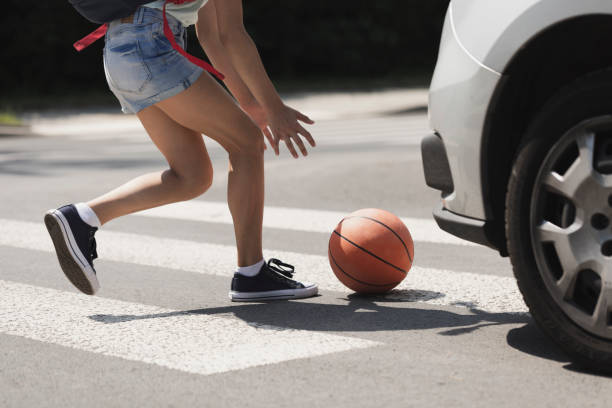After a pedestrian accident, your priority should be ensuring everyone’s immediate safety. Check for injuries and call emergency services if needed. Once the scene is secure, gather essential information like the details of all parties involved, vehicle specifics, and witness contacts. Remember to document the scene with photos and a detailed account. Even if injuries seem minor, seeking medical attention is a must. Consulting a legal expert can help you navigate potential claims and protect your interests. But what should you avoid doing to ensure your rights are fully protected?
Ensure Immediate Safety
Your immediate priority after a pedestrian accident should be to ensure everyone’s safety. First, check yourself for any injuries. If you’re hurt, stay calm and avoid moving too much until help arrives. If you’re not injured, your next step is to check on others involved. Approach the pedestrians carefully and ask if they’re okay. If they’re conscious and responsive, encourage them to stay still until medical professionals arrive.
Next, call emergency services immediately. Dial 911 to report the accident and provide as much detail as possible about the location and the condition of those involved. While waiting for emergency responders, keep an eye on the situation to ensure it doesn’t worsen. If the pedestrian is unconscious or has severe injuries, avoid moving them unless they’re in immediate danger, such as being in the path of oncoming traffic.
If it’s safe to do so, and you haven’t already, move your vehicle out of the way to prevent further accidents. Turn on your hazard lights to alert other drivers. Remember, securing the scene and ensuring everyone’s safety is the first and most crucial step after an accident.
Gather Essential Information
Once everyone’s immediate safety is ensured, gathering essential information from all parties involved in the accident is crucial. Start by exchanging names, addresses, phone numbers, and insurance details with the driver. Note the vehicle’s make, model, color, and license plate number. If there are any witnesses, get their contact information since their accounts can be valuable later.
Take clear photos of the scene, including the surrounding area, any skid marks, vehicle damage, and your injuries. These photos can serve as crucial evidence. Remember to capture traffic signs, signals, and other relevant road conditions that might have contributed to the accident.
Write down a detailed account of what happened while it’s still fresh. Include the time, date, weather conditions, and any other relevant factors.
If law enforcement is involved, ask for the officer’s name, badge number, and copy of the accident report. This report can be an important piece of documentation for insurance claims or future legal actions. By gathering this essential information, you’re laying the groundwork for a thorough and accurate record of the accident.
Seek Medical and Legal Help
After gathering essential information, it is crucial to seek medical and legal help without delay. Even if you feel fine, injuries from pedestrian accidents can be deceptive and might manifest later. Visiting a healthcare professional ensures that any hidden injuries are diagnosed and treated promptly. Keep all medical records and receipts, as they’ll be important for any legal claims.
Simultaneously, consulting with a legal expert specializing in pedestrian accidents is vital. They can help you understand your rights, guide you through the legal process, and ensure you receive fair compensation. A lawyer can deal with insurance companies on your behalf, which can be overwhelming and complex.
Wait to speak to the insurance company before consulting your attorney. Anything you say could be used against you to minimize the payout. Your lawyer will help you craft a statement and handle all communications to protect your interests.

Leave a Reply